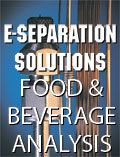Market Profile: Gas Chromatography
In gas chromatography (GC), the sample vapor passes through the column and separates into its components ? a separation that is governed by the distribution between the mobile and stationary phases.
In gas chromatography (GC), the sample vapor passes through the column and separates into its components – a separation that is governed by the distribution between the mobile and stationary phases. The degree of separation between the sample and the stationary phase is determined by flow rate, the nature of the stationary phase, the surface area exposed to the carrier gas, and the column temperature. As a result, while solvent changes are commonly used in high performance liquid chromatography (HPLC), GC uses temperature changes to improve separations. As the individual components emerge from the column, the detector obtains a signal.

2011 GC regional distribution
The GC columns may be of two types: packed or capillary. Packed columns can accept a larger injection volume, but capillary columns have better separating power. There are a number of different detectors available as a function of the analyte constituent. These include thermal and electrolytic conductivity, flame ionization, electron capture, nitrogen–phosphorus, photoionization, mass selective, infrared, and atomic emission detectors.
GC is very well established in the U.S., Western Europe, and Japan, where the installed base is extremely large. In fact, North America and Europe combined account for nearly 60% of the worldwide GC demand. However, lower-end GC systems have become ubiquitous in areas such as Eastern Europe, China, India, and Latin America.
The foregoing data were extracted and adapted from SDi's recently published Global Assessment Report, 12th Edition. For more information, contact Glenn Cudiamat, VP of Research Services, Strategic Directions International, Inc., 6242 Westchester Parkway, Suite 100, Los Angeles, CA 90045, (310) 641-4982, fax: (310) 641-8851, e-mail: cudiamat@strategic-directions.com
New Study Reviews Chromatography Methods for Flavonoid Analysis
April 21st 2025Flavonoids are widely used metabolites that carry out various functions in different industries, such as food and cosmetics. Detecting, separating, and quantifying them in fruit species can be a complicated process.
University of Rouen-Normandy Scientists Explore Eco-Friendly Sampling Approach for GC-HRMS
April 17th 2025Root exudates—substances secreted by living plant roots—are challenging to sample, as they are typically extracted using artificial devices and can vary widely in both quantity and composition across plant species.
Sorbonne Researchers Develop Miniaturized GC Detector for VOC Analysis
April 16th 2025A team of scientists from the Paris university developed and optimized MAVERIC, a miniaturized and autonomous gas chromatography (GC) system coupled to a nano-gravimetric detector (NGD) based on a NEMS (nano-electromechanical-system) resonator.

.png&w=3840&q=75)

.png&w=3840&q=75)



.png&w=3840&q=75)



.png&w=3840&q=75)








